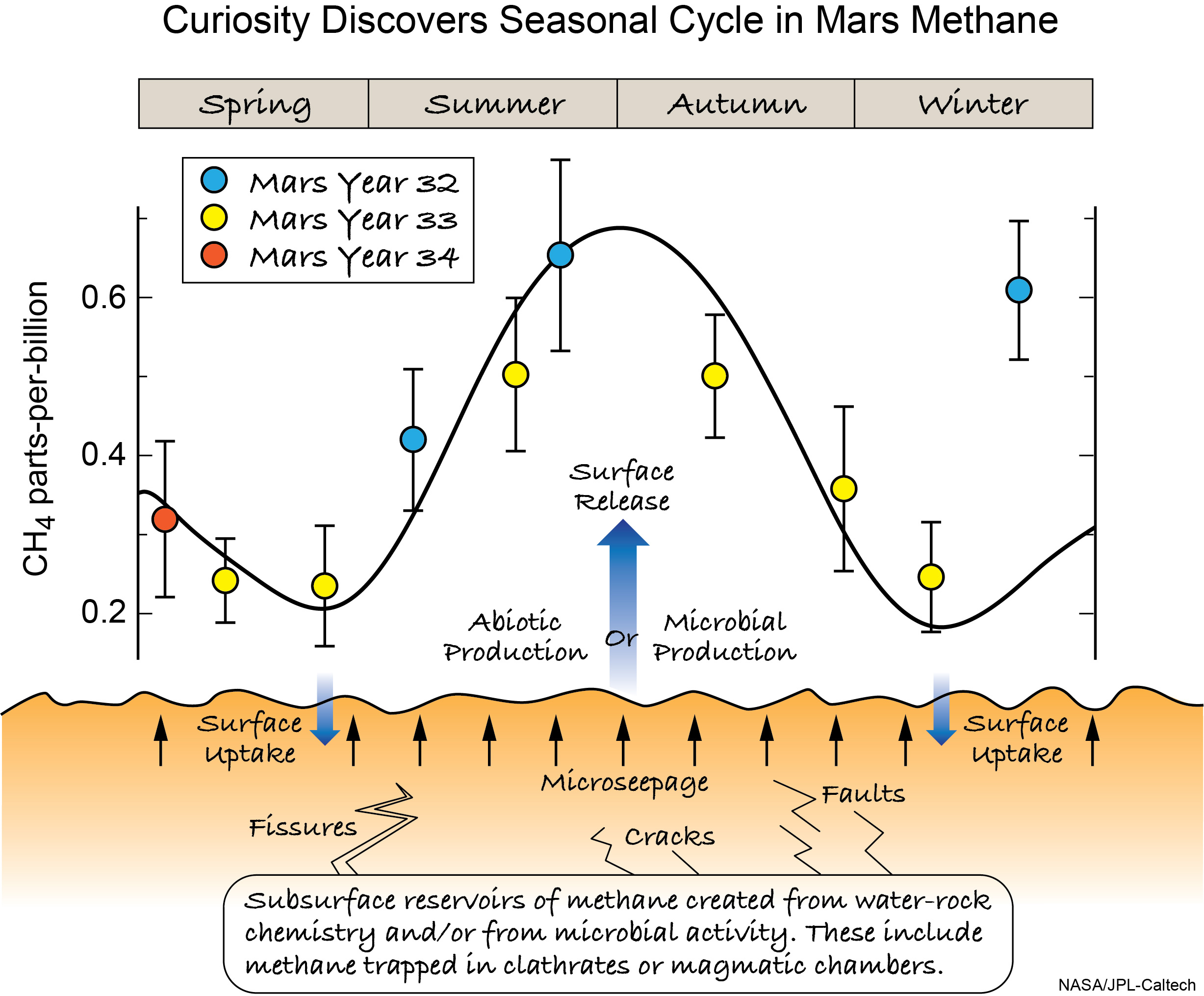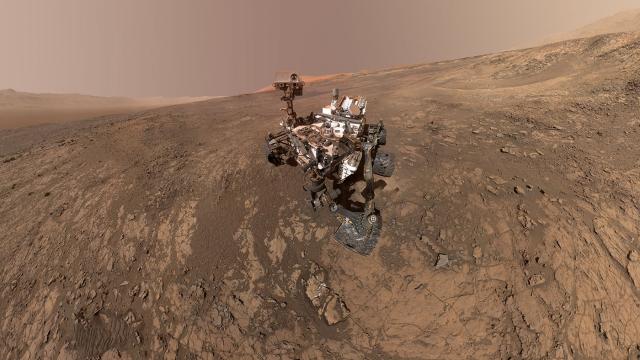No, NASA hasn’t discovered life on Mars yet – but a new result makes it seem as though maybe, at some point in the planet’s history, the conditions were ripe for some extraterrestrial beings. Maybe.
Curiosity selfie. Image: NASA/JPL-Caltech/MSSS
The scientists behind experiments conducted by the Curiosity rover are today reporting two results that make the Red Planet’s story even more interesting. One group found carbon-containing organic matter in 3.5-billion-year-old rock. Another noticed the methane levels around Curiosity varied by the season. Combined, these results present tantalising hints of a potentially habitable Martian past.
From everything we can tell of the chemistry and the minerals deposited in the Gale crater where Curiosity is stationed, “we think it was a habitable environment,” Jennifer Eigenbrode from the NASA Goddard Space Flight Center told Gizmodo. “It had the ability to support life – but doesn’t mean life were there.”
NASA’s Curiosity rover has wandered around Mars’ Gale crater, a presumed ancient lakebed, since 2012. Part of its duties include sampling the dirt and the atmosphere for interesting molecules, such as those that may reveal a history of life or habitability.
The most recent studies, both published in Science, shed light on that history. The rover’s Sample Analysis at Mars (SAM) instrument cooked some of the Martian dirt and unlocked some long-hidden carbon-containing molecules, some with sulphur and others with relatively complex structure.
“Perhaps they were from life, or maybe there was just an additional nutrient here for life,” Eigenbrode said. Organic molecules pop up frequently in space, but it’s neat that Mars had life’s building blocks during a time when many think it was more habitable.
As for the methane, Curiosity’s Tunable Laser Spectrometer measured the methane levels in its surrounding atmosphere over five years. The levels averaged at 0.41 parts per billion by volume, but ranged from 0.24 to 0.65 depending on the season. Here on Earth, we associate methane with life, but it’s a mystery what could be causing it on Mars. Perhaps it’s some geologic process.
“It probably indicates more active water in the subsurface than we understood,” scientist Kirsten Siebach, Martian geologist at Rice University not involved with the studies, told Gizmodo.

A potential explanation for the seasonal Martian methane. Illustration: NASA/JPL-Caltech
On Earth, we have a process by which underwater volcanoes interact with rock, producing methane that feeds bacteria. Maybe there are subsurface Martian bacteria eating that methane, Tanya Harrison, director of research for Arizona State University’s Space Technology and Science (“NewSpace”) Initiative, told Gizmodo. But for now, there’s no evidence for any such bacteria.
The methane is cool, whether it’s linked to life or not. “We thought Mars was dead internally,” Harrison said. “Now we have data to confirm that there’s a seasonal cycle, suggesting the methane is being generated by something.”
All of the outside sources I spoke with said it’s important to be sceptical about claims of life, extinct or otherwise, on the Red Planet. After all, these are just organic molecules on their own, so we’re still in the stage of chemistry, rather than biology.
Plus, scientists don’t know what the original molecules were before Curiosity heated the rocks to take the measurement, Utrecht University scientist Inge Loes ten Kate, who was not involved with the research, told Gizmodo.
There’s so much left to learn about Mars. The Insight and ExoMars missions will teach scientists more about the planet’s geology and methane. Mars2020 will shed light on the organic molecules – and prepare a sample that some future mission could bring back to Earth. Mars doesn’t recycle its rock the way that Earth does – maybe its ancient dust can teach us a thing or two about our own planet’s history, said Siebach.
I asked everyone I spoke with if they thought there was life on Mars, and the consensus was maybe, maybe not. “If you explore both of those paths forward, it’s astounding,” Eigenbrode said. “It’s fascinating what they mean for understanding life in our universe.”
